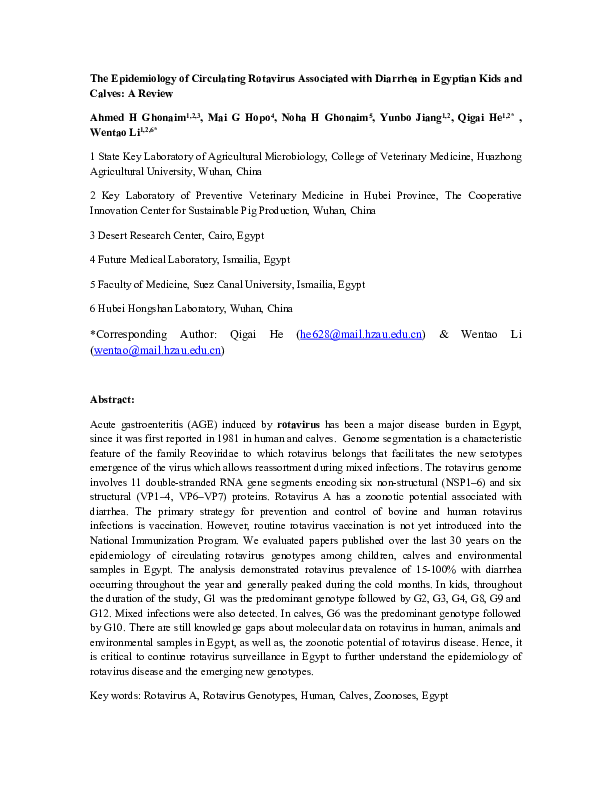The Epidemiology of Circulating Rotavirus Associated with Diarrhea in Egyptian Kids and Calves: A Review
Preprint |
10.55415/deep-2023-0026.v1
This is not the most recent version. There is anewer
versionof this content available.
Abstract
Acute gastroenteritis (AGE) induced by rotavirus has been a major disease burden in Egypt, since it was first reported in 1981 in human and calves. Genome segmentation is a characteristic feature of the family Reoviridae to which rotavirus belongs that facilitates the new serotypes emergence of the virus which allows reassortment during mixed infections. The rotavirus genome involves 11 double-stranded RNA gene segments encoding six non-structural (NSP1–6) and six structural (VP1–4, VP6–VP7) proteins. Rotavirus A has a zoonotic potential associated with diarrhea. The primary strategy for prevention and control of bovine and human rotavirus infections is vaccination. However, routine rotavirus vaccination is not yet introduced into the National Immunization Program. We evaluated papers published over the last 30 years on the epidemiology of circulating rotavirus genotypes among children, calves and environmental samples in Egypt. The analysis demonstrated rotavirus prevalence of 15-100% with diarrhea occurring throughout the year and generally peaked during the cold months. In kids, throughout the duration of the study, G1 was the predominant genotype followed by G2, G3, G4, G8, G9 and G12. Mixed infections were also detected. In calves, G6 was the predominant genotype followed by G10. There are still knowledge gaps about molecular data on rotavirus in human, animals and environmental samples in Egypt, as well as, the zoonotic potential of rotavirus disease. Hence, it is critical to continue rotavirus surveillance in Egypt to further understand the epidemiology of rotavirus disease and the emerging new genotypes.


